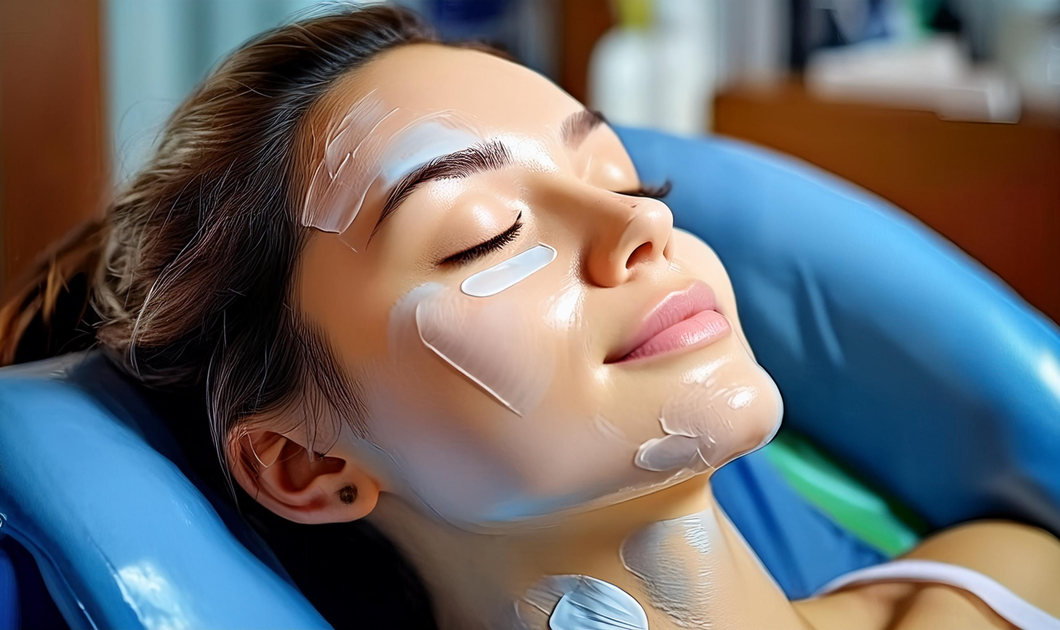- +91-856 184 0164
- connect@draakanshavashistha.com
- Jaipur (RAJ) INDIA
CONTACT US
- +91-856 184 0164
- Jaipur (RAJ) INDIA
- connect@draakanshavashistha.com

Aesthetic & Cosmetic Treatments
PROCEDURE : NON-SURGICAL
What is a chemical peel?
A peel is a non-surgical rejuvenation procedure that involves use of chemical to induce injuries to the skin in a controlled fashion at a specific depth to achieve the desired goal. It involves exfoliation of the top layers of the skin. The new skin underneath is usually smoother, less wrinkled, and has a more even tone.
What are the different types of chemical peels?
The pills are usually classified on the depth of their action a superficial peels medium depth feels and deep feels
- Superficial Peels: These include peels like AHA, BHA and combination peels like Jessner’s solution. The commonly used peels are glycolic acid and salicylic acid peel. These are mild acids which gently exfoliate the skin while salicylic acid is known to be effective in treatment of acne.
- Medium Peels: include peels such as TCA ( tri chloro acetic acid) which penetrates deeper than the superficial peels and are effective for treating fine lines, wrinkles and acne scars.
- Deep Peels: Include strong acids like phenol or carbolic acid which penetrates in the reticular dermis which is the deeper layer of the skin to treat fine lines ,wrinkles and severely sun damaged skin.
- What are the skin conditions that chemical peels can treat?
- Acne and acne scars
- Fine lines and wrinkles
- Sun damage
- Hyperpigmentation
- Melasma
- Uneven skin tone and texture


Before

After
How is the procedure performed?
It involves cleansing the skin and removing any make up and topicals like sunscreen from the skin.
The peel is then applied for a set time depending on the agent and the concentration being used . The peel is then neutralized After the procedure.
The doctor will then advise you the post peel precautions that you need to take.
What should I expect during recovery?
The recovery depends on the depth of the peel that is being used. Mild redness and irritation might be present after a superficial peel which usually within a period of 2-3 days, while post medium depth peels it may take a week to resolve. The post procedure redness after the deep peels is more intense and needs a recovery time of up to two weeks or more.

What are the side effects of these treatments?
Common side effects include redness, irritation, and peeling. More serious risks include scarring, infection, and changes in skin color (PIH) with deep peels , particularly in people with darker skin.
How should I care for my skin after a peel?
You need to use a sunscreen regularly after a peel treatment and follow all post procedure instructions as provided by your doctor. You should avoid picking or peeling the exfoliating skin to prevent any scarring and moisturize your skin regularly.
#ChemicalPeel #AntiAging #SkinRejuvenation #ChemicalPeelTreatment #AntiAgingPeel #YouthfulSkin #GlowingSkin #SkinRenewal #PeelAwayAging #ChemicalExfoliation #SmoothSkin #FineLineReduction #AntiAgingTreatment #ChemicalPeelResults #RadiantSkin #WrinkleReduction #SkinCareRoutine #PeelTreatment #SkinGlow #RejuvenatingPeel #SkinBrightening #ChemicalPeelFacial #AntiAgingGlow #SkinRevitalization #PeelAwayWrinkles

